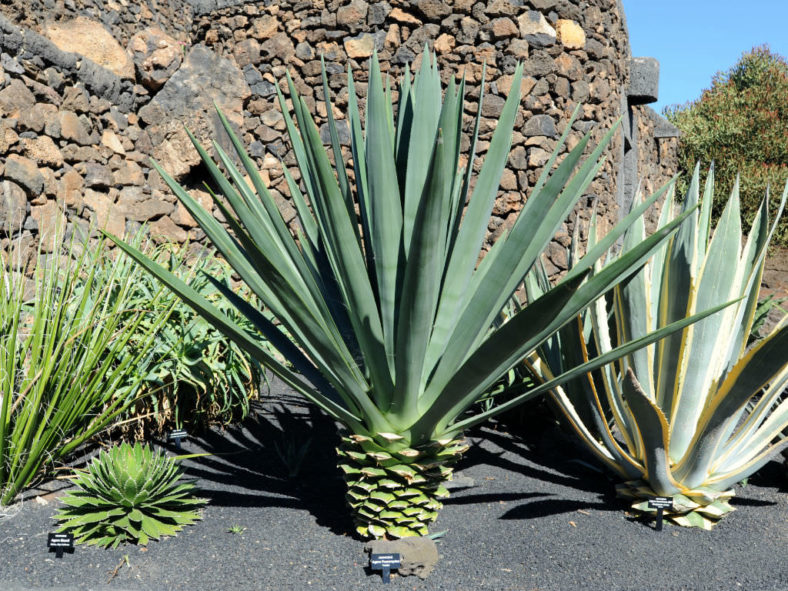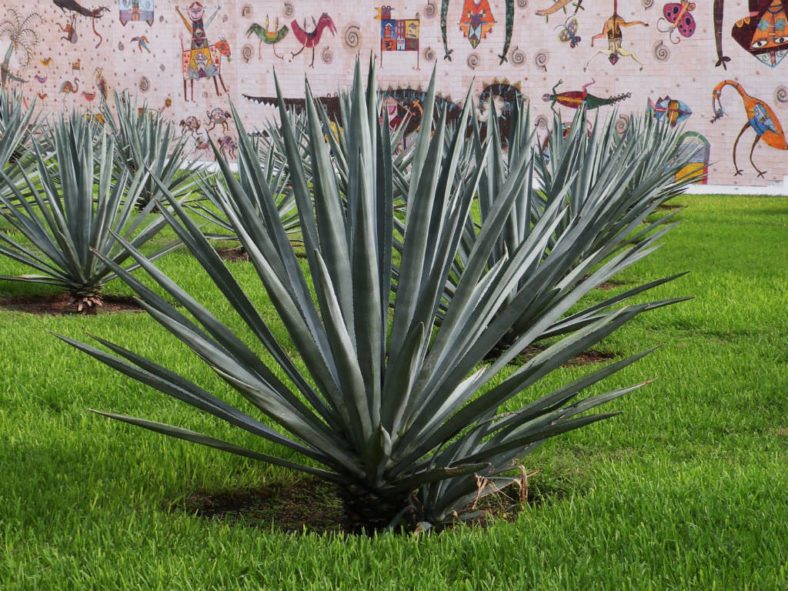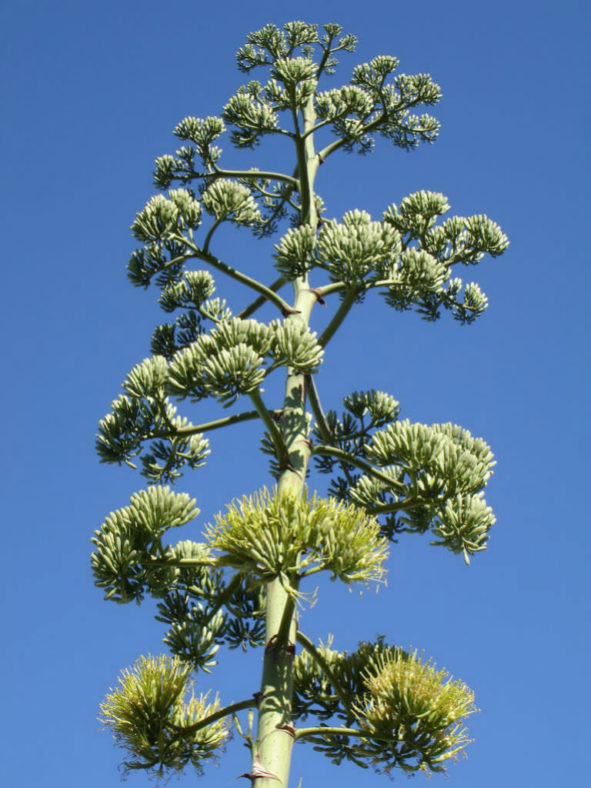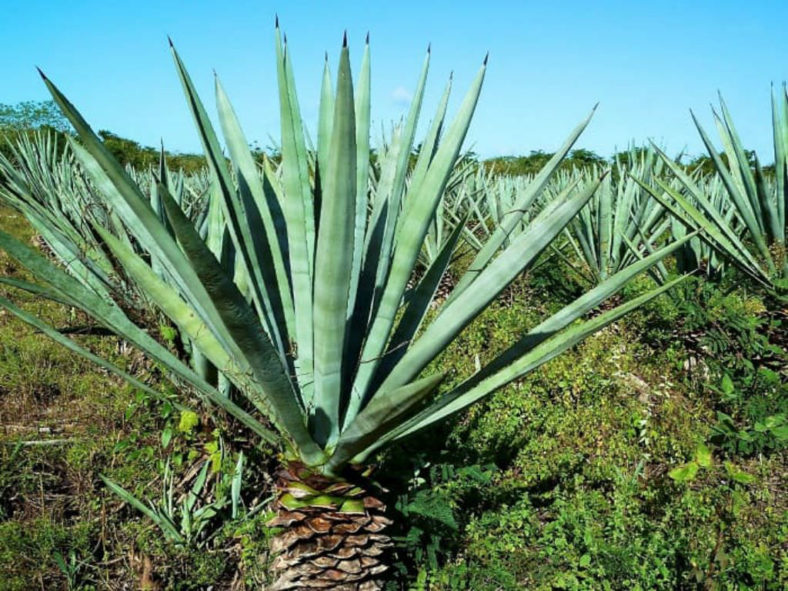Scientific Name
Agave fourcroydes Lem.
Common Name(s)
Cuban Sisal, Henequen, Henequen Agave, Mexican Sisal, Sisal Hemp, White Henequen, Yucatan Sisal
Synonym(s)
Agave fourcroydes var. espiculata, Agave rigida var. elongata, Agave sullivanii
Scientific Classification
Family: Asparagaceae
Subfamily: Agavoideae
Genus: Agave
Origin
Agave fourcroydes is native to southern Mexico and Guatemala. It has been naturalized in Italy, Spain, the Canary Islands, the Cayman Islands, The Leeward Islands, Costa Rica, Cuba, the Dominican Republic, Puerto Rico, Haiti, the Lesser Antilles, and Tunisia.
Description
Agave fourcroydes is a succulent plant with grayish-green, lance-shaped leaves that grow from a thick stem, forming a dense rosette. The stem can grow up to 6 feet (1.8 m) tall. The leaves are edged with sharp teeth and have a strong terminal spine up to 1.2 inches (3 cm) long. They can reach up to 6 feet (1.8 m) in length and up to 6 inches (15 cm) in width.
A mature rosette produces an erect flower stalk that bears sterile greenish-white flowers, reaching 20 feet (6 m) in height. The rosette dies after flowering. The flower stalk produces bulbils that can be planted, but commercial propagation is usually done by offsets that develop more quickly.

Hardiness
USDA hardiness zones 9b to 10b: from 10 °F (−3.9 °C) to 40 °F (+4.4 °C).
How to Grow and Care
Agaves are not difficult plants to grow. They are slow-growing and dramatic and will even thrive on a bit of neglect. If you are the type of person who likes to fuss with houseplants and water a lot, Agave is probably not the plant for you. However, if you like to set it and forget it, and you have a sunny window, Agave might be the way to go. Be aware that some large varieties will eventually outgrow your room (unless you have a large greenhouse), and Agave can be aggressive. They have irritating sap and sometimes very sharp thorns that can cause injuries to small children and even pets.
In general, Agaves do not need to be repotted every year. Most species commonly found in cultivation grow slowly and take long to outgrow their pot. It is also best to handle your plants as little as possible since they do not like to be disturbed. When you do repot, refresh the spent soil with a new potting mix and make sure the plant is firmly anchored in its pot. However, do not pot the Agave too deep to encourage stem rot during the growing season.
Learn more at How to Grow and Care for Agave.
Links
- Back to genus Agave
- Succupedia: Browse succulents by Scientific Name, Common Name, Genus, Family, USDA Hardiness Zone, Origin, or cacti by Genus
Photo Gallery
Click on a photo to see a larger version.


